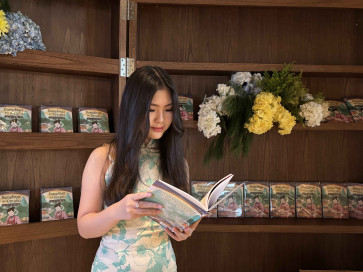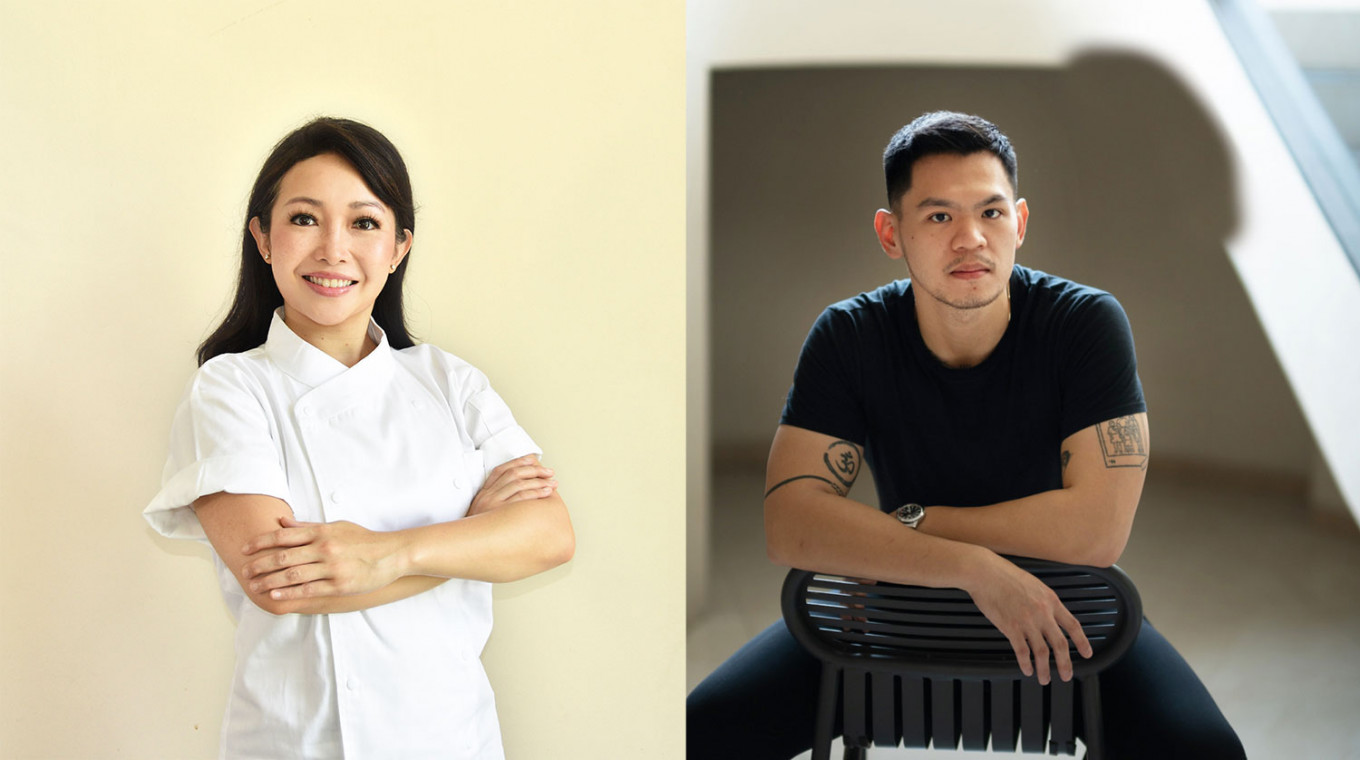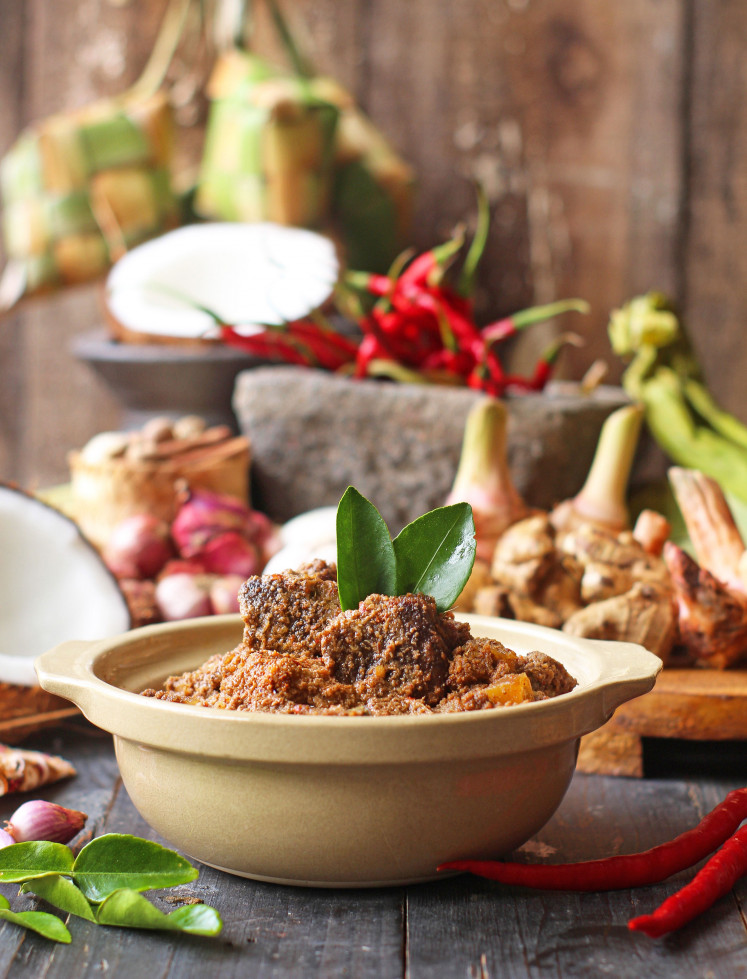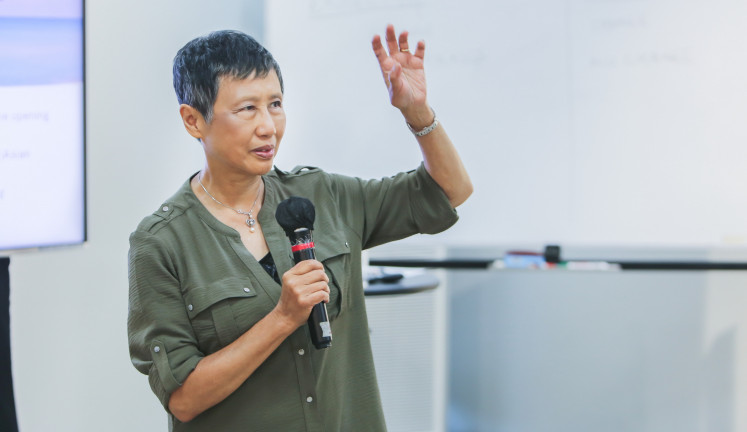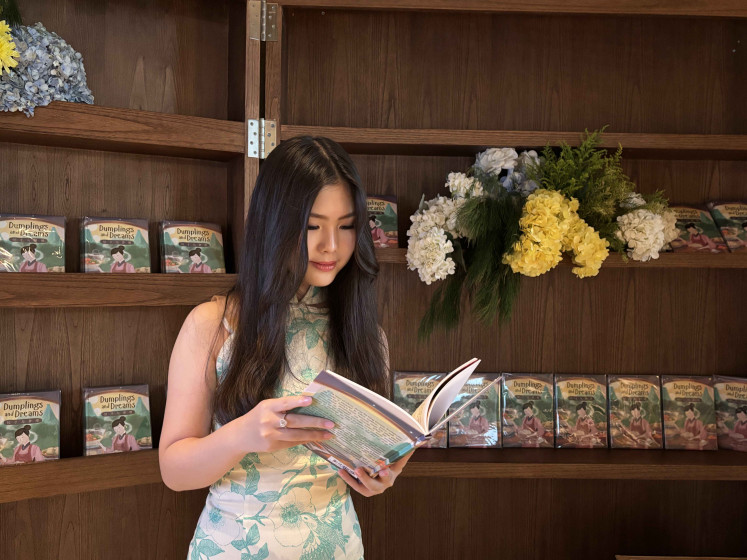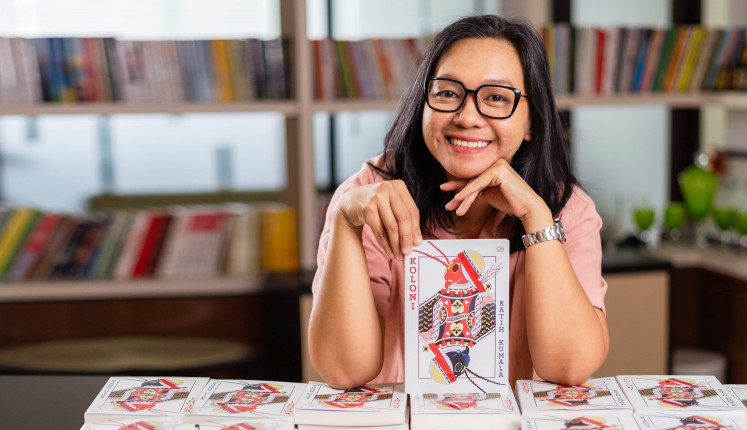Jerry Andrean, winner of MasterChef Indonesia’s season 7, and Rinrin Marinka, former judge of MasterChef Indonesia.
“It’s raw!” The infamous statement by Gordon Ramsay may make novice chefs’ knees tremble, but cooking competition shows in Indonesia have proved to be more than just entertainment. They are also opportunities for young chefs to expand their culinary skills and for Indonesian cuisine to take center stage.
With MasterChef Indonesia — the longest running competitive cooking show — set to start its 12th season, cooking shows have become launchpads for many aspiring chefs to start their careers. It is easy to see how the celebrity status winners gain afterward paves the way to launching their own businesses and more.
But weeks before the glitz of bearing the champion’s crown, participants will first have their knowledge of Indonesian and international cuisines rigorously challenged, their execution of various cooking techniques scrutinized and their presentation of dishes judged down to the smallest details — all in front of millions of viewers.
“Entertainment plays a big part in [cooking shows], and we hope there is [also] some education for the viewers,” says Rinrin Marinka, chef and former judge of MasterChef Indonesia.
Spotlight on Indonesian cuisine
Inside the studio’s pantry, colorful stacks of local and imported spices — including rare finds like papaya leaves, kecombrang (torch ginger) and andaliman pepper — invite participants to express their creativity, while pushing them out of their comfort zones.

Thank you!
For signing up to our newsletter.
Please check your email for your newsletter subscription.
That was certainly the case for Luvita Hodiono, a participant of MasterChef Indonesia season four, who quickly discovered that the competition would entail overcoming a steep learning curve.
“To be honest, my biggest fear when I started on MasterChef Indonesia [was to be challenged] on Indonesian food,” says Luvita, who admitted that she very rarely cooked local dishes before joining the competition.
At each stage of the competition, participants face challenges such as cooking with a mystery ingredient or recreating a dish.
Simply by tasting a dish like ayam betutu (Balinese spiced chicken), “you need to know whether the chicken is boiled, fried, roasted or steamed and so on, before you recreate it. So, besides knowing the basic recipe, you also need to rely on your instincts,” says Luvita, who spent weeks learning the basics of Indonesian cooking before the competition started.
Determined to stay on top, Luvita was eventually crowned the winner of MasterChef Indonesia season four. Now she runs her own YouTube channel, sharing baking recipes with her one million subscribers.
Read also: Dining at ESA: Dégustation, Jakarta style
It was a different story for Jerry Andrean, a contestant on MasterChef Indonesia season seven. By the time Jerry entered the competition, he already had some professional experience cooking up Italian and other Western dishes, so it was a shock to him when he found himself nearly eliminated.
“I wanted to impress people, do fine dining and all. But I ended up overthinking,” Jerry says. “I was too idealistic.”
That forced Jerry to reflect on his personal history and cooking philosophy. “I came to realize that my palette is truly Indonesian. I grew up helping my father cook Indonesian dishes, like rendang or gulai,” he says, referring to the popular spicy slow-cooked beef dish and the curry-like stew.
With some knowledge of Western cuisines, Jerry added his own twist to every Indonesian dish he created — a strategy that quickly made him stand out among other contestants. “That was possibly the first time I tried to experiment mixing techniques from different cuisines on my own,” he says.
One dish that was particularly memorable was gulai udang. “Usually prawn is braised, but I pan-seared and poached it with butter,” says Jerry. “So I used Western techniques, but aimed for Nusantara flavors.”
It worked: Jerry was named the winner of MasterChef Indonesia season seven. Building a career on the back of his newfound status, Jerry garnered more than a million followers on Instagram and is now opening food and beverage businesses.
Elevating Indonesian ingredients
With all this attention on Indonesian cuisine and ability to create culinary stars, cooking shows can still do more to elevate Indonesian ingredients, according to Janet DeNeefe, founder of the Ubud Food Festival.
“I do think all chefs should make a commitment to use all artisanal ingredients, like salt, because it's kind of our job to help these ingredients survive,” Janet says.
Many native ingredients, each one a gateway to a whole new range of flavors, are still underexposed, and cooking shows have the ability to leverage the popularity of forgotten ingredients.
Artisanal salt from Gunung Krayan, for instance, has mineral properties to keep vegetables from turning dull when cooked, according to Bara Pattiradjawane, author and former judge at Junior MasterChef Indonesia.
Read also: To gadget or not to gadget, that is the questionUnlike common salt farmed from the ocean, Gunung Krayan salt “comes from springwater,” Bara explains. “People may think it’s just salt,
Using artisanal salt and local spices not only enhances flavors but helps preserve them as part of our nation’s culinary heritage
but it has such a fascinating story that I’m sure Indonesians will be very interested in.”
Entertainment can certainly help to broadcast these stories to a national audience, says Renatta Moeloek, chef and judge for MasterChef Indonesia, who notes that Indonesian cuisine and the utilization of local produce have been growing.
“Let’s say, moringa leaves, we see it being used in more things than ever before as we keep innovating,” she says.
With cooking shows having propelled their winners to stardom, Bara says he hopes they can also use their influence to draw greater attention to artisanal ingredients and, consequently, support the farmers producing them.
“So please use your celebrity status to touch on the farmers, because everything you do on social media begins in their hands,” he says.
By doing so, cooking shows and the celebrity chefs they produce could make a much greater impact on Indonesia's culinary heritage.
Michelle Anindya is a writer and journalist. She writes about anything from coffee to tech, mostly from her home in Bali.
This article is part of The Weekender, a biweekly tabloid that appears in the Saturday edition of The Jakarta Post. Offering a variety of feature articles on lifestyle and culture, it aims to enriching your reading experience. Subscribe here to access The Jakarta Post’s Saturday edition and all Premium content.







